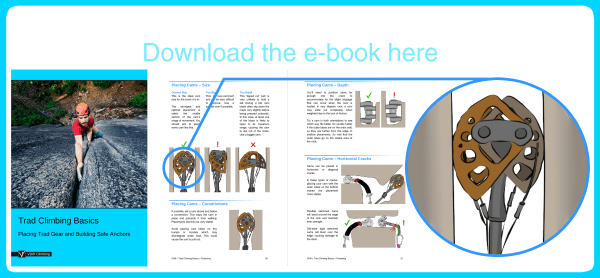This 'Belaying the Second' article is part of the book - Trad Climbing Basics.

Belaying from an Anchor
Once you’ve climbed a pitch and built an anchor, you will need to belay your partner up. Pull up all the slack rope in the system until it's tight on your partner, then choose a method to belay them.
Three of the most common belaying methods are described below. It's important to understand the advantages and limitations of each, and be able to adapt these methods to suit any situation.
Method 1: Re-directed Belay
Clip a screwgate to the central point. Run your partner’s rope through this and down to your belay device. You'll be able to belay as you normally would on a top-rope. Your belay device will need to be at least 1.5 meters away from the central point. This reduces the chance of you being pulled into it if your partner falls. Also, make sure that the rope isn't rubbing against your attachment knot at the central point. Consider attaching to the top shelf to avoid this if possible.
Advantages
- Most of the weight of a falling climber is transferred to the anchor, not your harness.
Disadvantages
- It's possible to get pulled into the central point if your partner falls, particularly if they are heavier than you. In this case, there is a real danger of losing control of the brake rope.
- More difficult to set up when using half ropes (you'll need a separate point for each rope)
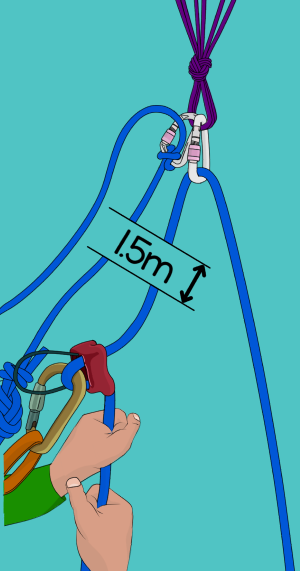
Best Situation to Use This Method
When you have a nice ledge to stand on and the central point is just above your head.
Method 2: Belaying Directly from your Harness
Attach your belay device to either your belay loop or rope loop. This can be set up so the brake rope comes out of either the top or bottom of the belay device – choose whichever way is easier to lock off the brake rope.
In most situations, the weight of a falling climber will pull down from you, not up. Because of this, you will need to lock off upwards not downwards.
Advantages
- You can use this method for almost every belay situation.
Disadvantages
- If your partner falls, it's possible that their weight will pull uncomfortably on your harness or over your legs.
Best Situation to Use This Method
If you have used your rope to equalize the anchor.
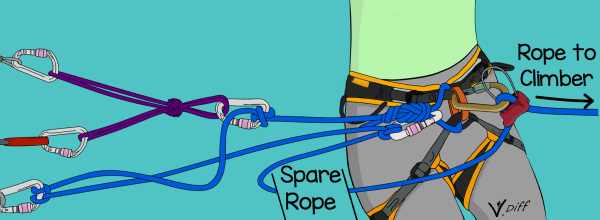
Method 3: Belaying in Guide Mode
Some belay devices have a guide mode function - they can be set up in a way which locks automatically if a climber falls. They can be used as a normal belay device too.
You can set up guide mode as shown, with one rope or two.
Simply pull the brake strands through as the climber moves up. If they fall, the device will lock by itself almost instantly. Even though guide mode belay devices are auto-locking, you should always keep hold of the brake rope.
Before you use guide mode, you should understand how to lower a climber (see our guide mode article).
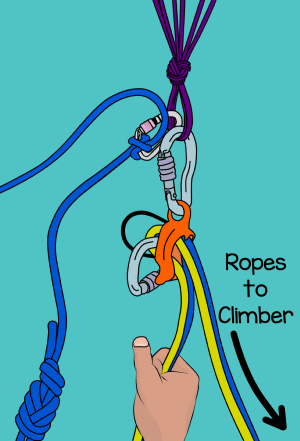
Advantages
- The weight of a falling climber isn't on your harness, which is much more comfortable!
- You can bring up two climbers at the same time (on two different ropes) - great if climbing as a team of three.
- Because you are not directly attached to your belay device, it is easier to detach yourself from the system in an emergency.
Disadvantages
- Time-consuming to lower a climber, even a short distance.
Best Situation to Use This Method
When climbing as a team of three.
Rope Loop or Belay Loop?
You can belay either from your belay loop or from your rope loop. In some situations, using the rope loop can be more comfortable - it allows you to transfer the weight of a fallen climber onto the anchor, rather than having their weight pulling on your harness.
Remember that if you used two ropes in the anchor, you'll need to belay from both rope loops. If you are unsure, just use your belay loop.
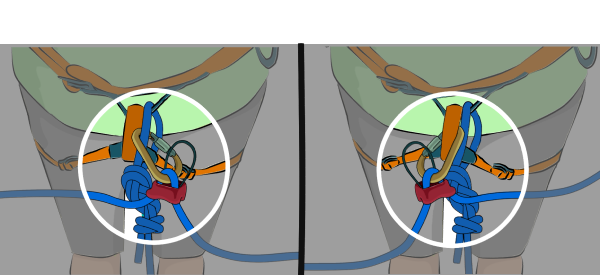
Where To Put the Spare Rope
There are basically two options. Either stack it into a neat pile somewhere or stack it through a sling.
For the sling method, start by pushing a long loop of rope through the sling. Continue doing this, making smaller loops each time (bigger loops are more likely to get tangled into each other when you are belaying the leader on the next pitch).
However you choose to stack the rope, make sure it is within reach and that you can do it one-handed; you'll need to belay at the same time!

